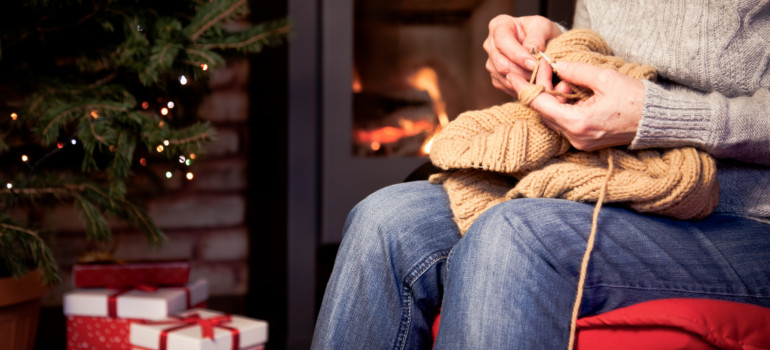
With Christmas right around the corner, we are all excited about the decorations, especially the Christmas tree! But with all good things, there may be some surprises. And in this case – Christmas Tree Bugs.
Yes, Christmas trees are home to many bugs before they get cut and presented on the market for unsuspecting consumers of festivities.
Table of Contents
Bugs in Real Christmas Trees
- Adelgids. These are tiny, sucking bugs that secrete cottony wax filaments over the branches and the stem that resemble a dusting of snow on the Christmas tree. They are sedentary and cannot fall from the tree unless you use some force. They can flock together in bizarre forms but are generally harmless.
- Aphids. Most aphids are tiny, inactive, and unnoticeable Christmas tree bugs. But some species grow big enough to be seen by the naked eye. Aphids could be found on lower boughs on trees. The ones that cause Christmas tree infestation can survive only on the particular tree, which means they would not try to infest other house plants. Don’t squash them on furniture, as they will leave a purple or red stain.
- Sawflies. They are less common than other pests and bugs but are more likely to be found on spruce and pine trees. Sawflies are brown cocoons that hatch black and yellow flies.
- Bark Beetles. Cylindrical, hard-bodied red, brown and black bugs about the size of a grain of rice, which get their name from the fact that they mostly bore into the tree trunk, creating small holes and fine sawdust. Unlike woodworm, which causes similar symptoms on wood, this specimen wouldn’t target your furniture because they need humidity, and all furniture is made of dry wood.
- Spiders & Mites. Neither mites nor spiders would harm your Christmas tree. They’re on the tree precisely because there’s food – aka, other insects or their eggs. They are harmless to humans and pets, so it won’t be a big deal just to leave them be. If you are interested, you can read more about spiders’ benefits and their eating habits.
- Praying Mantis. Light tan, walnut-sized egg mass (which can contain up to 400 eggs) that will begin to hatch after several weeks of being indoors. You may even find their egg cases attached to the branches. The tiny mantis will swarm around the tree looking for food. They will most likely eat any other insects infesting the Christmas tree and might even devour each other if they’re the only ones left. In this case, take that part of the branch outdoors to keep it from hatching inside.
- Psocids. Psocids are small, winged bugs, also known as bark lice or booklice, that feed on including fungus, mould, pollen, and dead insects. These die the quickest when exposed to dry indoor air. Despite their name, they are not like typical lice and do not bite or feed on humans.
- Pine needle scale. The eggs of these scale insects look like little white specs on your Christmas tree’s needles, almost like it has flecks of white paint on them. If they hatch, small red bugs will produce. When a Christmas tree is brought indoors, the crawlers may emerge after a couple of weeks and crawl on the tree and perhaps even on the floor and walls near the tree. If found off the tree, the crawlers can be cleaned up with a damp towel.
Check also:
Where Do Insects Go in the Winter Time?
Most Common Wood Boring Insects in the UK
What Christmas tree should I buy?
There are many types of trees you could choose from. A lot of people are interested in Pine and Spruce. But for the past years, they might have chosen their favourite one – the Nordmann Fir tree.
The Nordmann fir is one of the most important species grown for Christmas trees, being favoured for its attractive foliage, with needles that are not sharp and do not drop readily when the tree dries out. It is also a popular ornamental tree in parks and large gardens.
Don’t hesitate and call Fantastic Services to Book Your Real Christmas Tree!
Based on a little research, below you can see what are the most commonly found Christmas bugs.
| Christmas Trees | Fir (balsam, Fraser, white, Douglas, Nordmann) | Pine (white, scotch, Monterey, Coulter, Jeffrey) | Spruce (Norway) |
|---|---|---|---|
| Adelgids | ✓ | ✓ | ✓ |
| Aphids | ✓ | ✓ | ✓ |
| Sawfly | – | ✓ | – |
| Spiders & Mites | ✓ | ✓ | ✓ |
| Praying mantis | any type of tree | ||
| Psocids | any type of tree | ||
| Bark Beetles | ✓ | ✓ | ✓ |
| Pine needle scale | ✓ | ✓ | ✓ |
Check also:
What Damage can Christmas tree bugs do?
Most Christmas tree bugs don’t live off the tree, only in it. Once their habitat is changed, they will die due to a lack of food and proper humidity. Your home’s environment isn’t suitable for them, so they will dry out and die before ever venturing out.
The types of bugs inhabiting your Christmas tree are mostly harmless and won’t destroy your home. But don’t squash them as they may leave marks on furniture and walls.
How to Remove Pests from Christmas Trees?
This process of pest removal should start on the market. So, don’t be shy to look over the tree of your choice before buying. It’s never a bad idea to take along a bright flashlight with you as you select your tree.
- Examine. First, look around the branches and notice if something is moving. Shine the light onto the trunk of the tree at several points and look for bugs, eggs or leftovers of bird nests. In that case, prune the branches.
- Shake. Before you purchase your Christmas tree, ask the tree lot attendant to vigorously shake the tree in order to shake off any bugs that might be present. Some tree lots have tree shakers for this purpose.
- Let it sit. Once you buy your Christmas tree, leave it for a few days in the garage. If there are any bugs on it, they will die on their own because of the lack of food.
- Shake it again. After a few days, come back to the tree, place a sheet around it and shake it again to remove any bug corpses. They should fall right off.
- Clean up. It’s not a good idea to leave the bugs on the floor of your garage, so either sweep them up or vacuum.
- Dust. There shouldn’t be anything left, but if you’d wish, you can also spray the tree with neem oil, or Diatomaceous Earth, just in case.
Are you dealing with a pest infestation?
You don't have to be alone in the battle against pests. Hire a professional pest expert!
Call usOr, simply give a call to Fantastic Gardeners’ Christmas tree service! Then you can be certain that no pests will infest your holiday.
What about the bugs that made it into the house?
If by any chance, there were some bugs left alive after your treatment, they might find shelter around your property. But there is nothing to worry about, as they will soon find their death. The aforementioned Christmas tree pests are not able to survive inside properties (except for the spiders, but even they have limits). Simply sweep or vacuum any dead bug you find laying around.
The Fantastic Pest Control team cares about the state of your home and is always here to give handy tips that would keep your life away from pest infestations. Happy Holidays!
Image source: melis/shutterstock.com
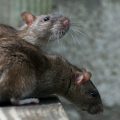
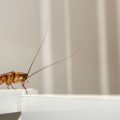


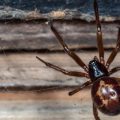
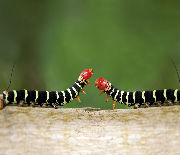
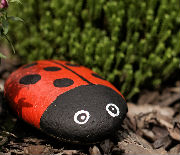
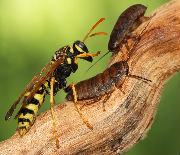
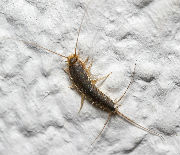
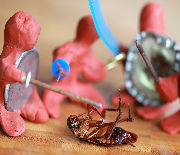
Leave a Reply